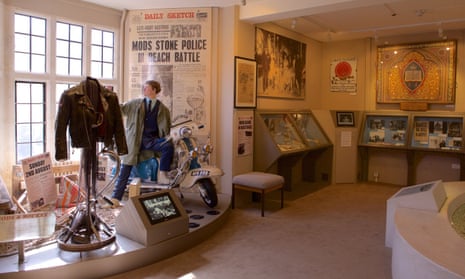The legacy of 1066 and all that means that Hastings will forever be identified with the pivotal battle between Normans and Anglo-Saxons. Yet the East Sussex seaside town now faces a fight to preserve access to the study of its role in English history.
Two years ago the Old Town Hall Museum of Local History, one of two museums run by the borough council, closed down for good. The remaining Hastings Museum and Art Gallery was left to promote the heritage of one of the most significant locations in the country.
New research shared with the Observer this weekend reveals the extent to which Hastings has been hit, in common with many other British towns, by the new austerity measures imposed on museums in the last seven years.
Opening hours at many of the country’s regional museums have been curtailed, the figures show. Statistics made public in response to a Freedom of Information inquiry submitted by Labour’s shadow arts and culture ministerial team show that more than 40% of 257 local-authority-run museums have shortened opening times. Those times are shorter by an average of 30% over the period due to funding cuts, and amount to a loss of 23,483 opening hours since 2010.
In 2010 both the Old Town Hall Museum of Local History and the Hastings Museum and Art Gallery were open for 2,270 hours each. Since then, opening times at the remaining museum have shrunk by 14.7%. “We have had to do a lot of rethinking, but there is still space to show plenty of remarkable things here,” said Cathy Walling, curator of Hastings museum, a grand faux castle that sits above the sea on White Rock Road.
Among its top exhibits, to Walling’s expert eye, are a rare Hawaiian ceremonial cape and a quirky display of 66 objects telling the town’s long story. Beginning with evidence of the full-scale Norman invasion after the battle in which King Harold lost his life, this two-room display includes a surviving sailor’s biscuit, a mural painted by Robert Tressell, author of The Ragged-Trousered Philanthropists, who lived locally, and a poster boasting the town’s development as a thriving resort in 1935, complete with huge lido (demolished in 1993) and the forward-looking slogan “the 1066 town with the 1966 outlook”.
Hastings residents seem to agree with Walling about the joy of the museum. Outside Jempson’s, a town-centre bakery and cafe that has “served the community for 75 years”, the views of Louise Cutler, 38, were typical: “I’ve lived here all my life, so, of course, I know it well. There’s always something going on there.”
At the foot of Brassey Steps, an alley named after Lord Brassey, one of the museum’s benefactors, Stuart Pace, 44, said the institution and its gallery were “lovely”. “It has some great stuff about the town,” he added. The museum’s Native American collection might seem out of place but it tells the strange story of one of Hastings’s greatest celebrities; Grey Owl, a fake Canadian chief whose real name was Archie Belaney.
Council cuts mean that until March the last entry for a museum visit is at 3.30pm, while on Mondays and Sunday mornings it is shut.
Elsewhere, the north-east is the hardest hit, with a 22% loss in hours. But there are also pockets of damage in the south aside from Hastings. On the Isle of Wight, the Cowes Maritime Museum, the Dinosaur Isle, Newport Roman Villa and the Museum of Island History have each seen drops in their opening times.
National statistics collated by the office of the shadow minister for arts and heritage, Kevin Brennan, show that museum rationalisation has resulted in an average decrease of 91.4 hours per museum over the last seven years.
“Museums are crucial to our shared cultural heritage but they’ve borne the brunt of years of government cuts,” said Brennan. “The government must properly address the glaring issue of local authority cuts to regional museums. Every opening hour lost makes museums more vulnerable and less accessible. Local museums are like cultural food banks – along with theatres and other cultural provisions. They foster creativity where it’s needed most. Tory austerity is putting them at risk, and the government is still refusing to acknowledge the damage being done.”
The publication of the findings of a government-commissioned museums review is expected this week. A submission to it by the Museums Association claims that government figures indicate a decrease in spending on culture in England of £236m since 2010.

Comments (…)
Sign in or create your Guardian account to join the discussion